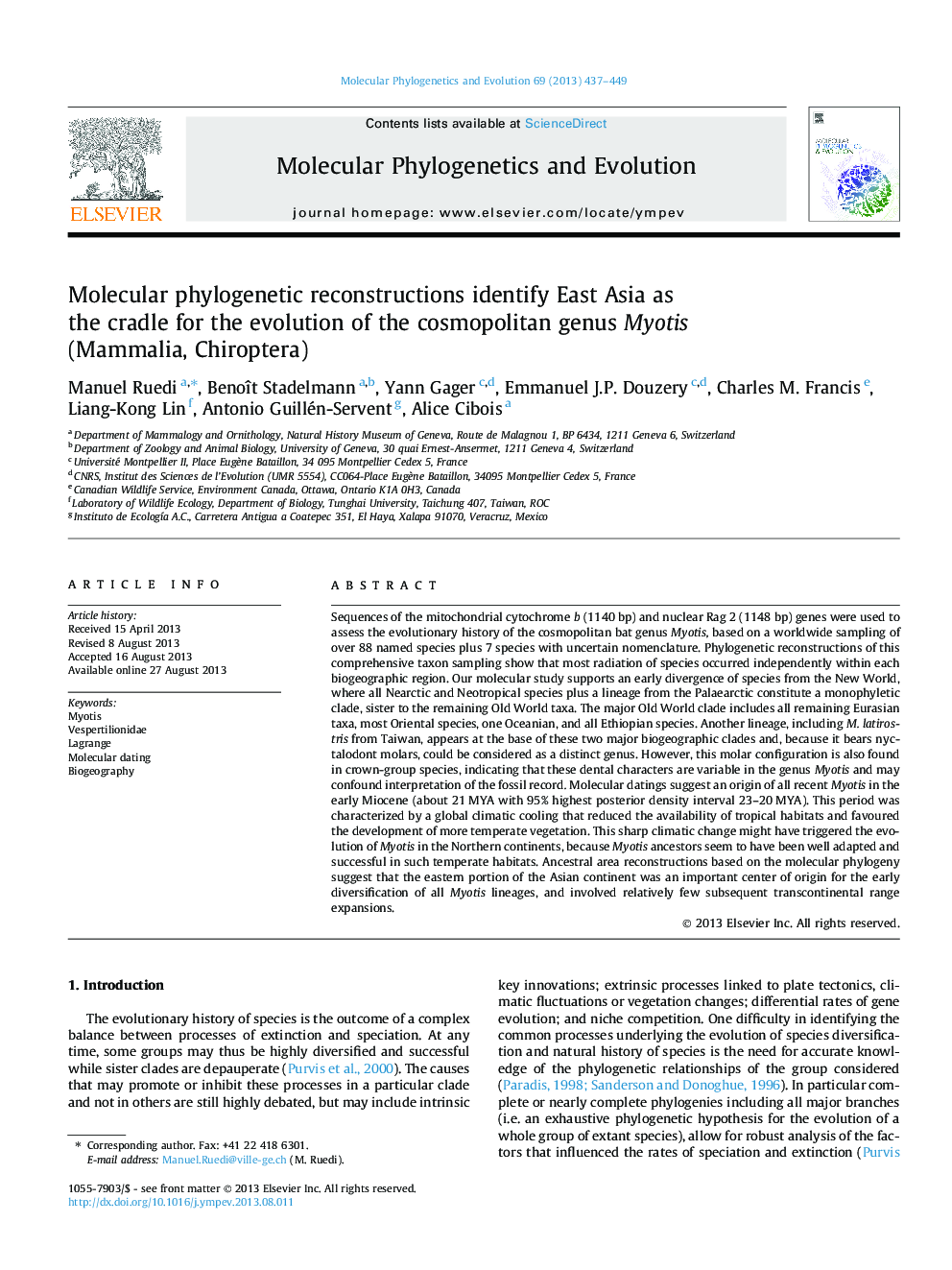| کد مقاله | کد نشریه | سال انتشار | مقاله انگلیسی | نسخه تمام متن |
|---|---|---|---|---|
| 5919627 | 1164270 | 2013 | 13 صفحه PDF | دانلود رایگان |

- Nearly complete phylogeny of Myotis distributed worldwide.
- New World versus Old World clade.
- Likelihood models of range evolution identify Eastern Asia for their origins.
- Ancestral area reconstructions suggest 21 intercontinental dispersals during 21Â MYA of evolution.
- Discrepancies in molecular dating and interpretation of fossil record due to homoplasies in dental evolution.
Sequences of the mitochondrial cytochrome b (1140Â bp) and nuclear Rag 2 (1148Â bp) genes were used to assess the evolutionary history of the cosmopolitan bat genus Myotis, based on a worldwide sampling of over 88 named species plus 7 species with uncertain nomenclature. Phylogenetic reconstructions of this comprehensive taxon sampling show that most radiation of species occurred independently within each biogeographic region. Our molecular study supports an early divergence of species from the New World, where all Nearctic and Neotropical species plus a lineage from the Palaearctic constitute a monophyletic clade, sister to the remaining Old World taxa. The major Old World clade includes all remaining Eurasian taxa, most Oriental species, one Oceanian, and all Ethiopian species. Another lineage, including M. latirostris from Taiwan, appears at the base of these two major biogeographic clades and, because it bears nyctalodont molars, could be considered as a distinct genus. However, this molar configuration is also found in crown-group species, indicating that these dental characters are variable in the genus Myotis and may confound interpretation of the fossil record. Molecular datings suggest an origin of all recent Myotis in the early Miocene (about 21Â MYA with 95% highest posterior density interval 23-20Â MYA). This period was characterized by a global climatic cooling that reduced the availability of tropical habitats and favoured the development of more temperate vegetation. This sharp climatic change might have triggered the evolution of Myotis in the Northern continents, because Myotis ancestors seem to have been well adapted and successful in such temperate habitats. Ancestral area reconstructions based on the molecular phylogeny suggest that the eastern portion of the Asian continent was an important center of origin for the early diversification of all Myotis lineages, and involved relatively few subsequent transcontinental range expansions.
Journal: Molecular Phylogenetics and Evolution - Volume 69, Issue 3, December 2013, Pages 437-449